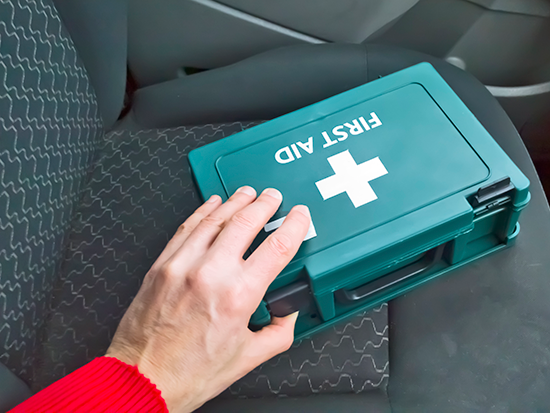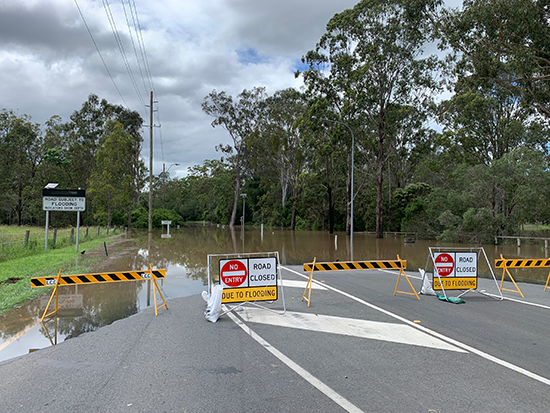UAB’s director of Emergency Management shares finest practices to organize for and keep protected throughout flash flooding.
Flash flooding is among the main causes of weather-related deaths within the United States in response to the National Weather Service. Over spring and summer season 2022, damaging flash floods have occurred throughout the nation from Texas to Death Valley to Kentucky and even in Birmingham and the encompassing areas.
Flash floods can happen inside a couple of minutes or hours throughout an extreme rainfall occasion, a dam or levee breaking or metropolis drains overflowing. The extent of the flooding depends upon how lengthy and the way arduous it rains, infrastructure, topography and soil circumstances in an space. Water can infiltrate buildings, roadways, carry away giant particles, trigger mudslides and create harmful conditions for individuals and their property.
Eddie Coar, director of Emergency Management on the University of Alabama at Birmingham discusses tips and finest practices on find out how to keep ready and protected throughout a flash flood.
Know your danger
The most typical forms of floods embrace city, river and coastal flooding. Coar suggests assessing the quantity of flash flooding danger for one’s home, workplace and normal space by checking with native emergency administration companies or the National Weather Service.
If there may be an elevated danger for that space, it is very important pay shut consideration to native climate experiences, particularly if there may be expectation for a heavy rain occasion reminiscent of a slow-moving thunderstorm, intense rainfall, tropical storm or hurricane.
Be ready
“Flash floods are unpredictable, rapid and can occur during any season,” Coar stated. “It is important for everyone to know their risk and create an emergency plan, so they are prepared for when a flash flood hits.”
Coar encourages households to create emergency response playing cards for every member, so everybody is aware of who’s answerable for each response or motion. The playing cards are additionally helpful for identification and call info ought to members of the family be separated or stranded.
Additionally, stocking vehicles and households with provides which are helpful throughout any pure disasters, together with flash floods, is a crucial step in emergency preparedness.
 Car provides:
Car provides:
- Flashlights and additional batteries
- First help equipment
- Food gadgets containing protein reminiscent of nuts and vitality bars
- Water
- Tool that breaks automobile home windows and cuts seat belts
- Cat litter or sand for tire traction
- Extra garments and durable boots
- Flares or reflective triangle
- Full gasoline tank, particularly if unhealthy climate is predicted
House provides:
- One gallon of consuming water per particular person per day for no less than three days
- Non-perishable meals provide for 3 days
- First help equipment and drugs
- Flashlight, batteries and hurricane candles saved in waterproof container
- Local maps
- Important household paperwork stored in waterproof container
- Complete change of clothes together with a long-sleeved shirt, lengthy pants and durable footwear
- Weather radio
- Whistle or reflective triangle
For those that reside in an space with a excessive danger of flooding, take into account having flotation gadgets simply accessible for all individuals within the family.
 Stay protected
Stay protected
Whether at house, work or in a automobile, individuals ought to instantly search increased floor or evacuate in a flash flood scenario. Never drive, stroll or swim by means of flooded roadways, sidewalks or flood waters in basements or different components of a house or constructing. Avoid downed energy strains.
“If you cannot evacuate before a flash flood occurs, stay where you are,” Coar stated. “It is dangerous to evacuate through flood waters because the depth and velocity of the water are not always obvious.”
Turn round, don’t drown!
Coar reiterates to not drive in flood areas or round security barricades. Driving by means of flood waters, even as little as six inches, can rapidly grow to be hazardous. Stay contained in the automobile if trapped in quickly transferring water. If water begins to rise within the automobile, get on the roof.
How to return safely
Even as soon as water recedes, it doesn’t at all times sign it’s protected to return to at least one’s automobile, house or workplace. Pay consideration to authorities for instruction and solely return when it’s deemed protected. Wear work gloves and protecting clothes whereas cleansing up. Be conscious that animals and snakes could also be hidden within the space. Continue to be careful for energy strains, keep away from utilizing moist electrical tools and solely use mills and gasoline-powered equipment exterior and away from home windows.
“While rushing flood waters create many dangers, it leaves behind many as well,” Coar stated. “Exercise caution when returning to areas and always listen to local authorities. Avoid wading in floodwater which could be contaminated with debris or could be electrically charged by underground or downed powerlines.”
For extra emergency preparedness tips and knowledge for all pure disasters, go to the UAB Emergency Management web site.
window.fbAsyncInit = function()
//Initialize the Facebook JavaScript SDK
FB.init(
appId : ‘212315948831253’, //App ID from the app dashboard
channelUrl : ‘http://www.uab.edu/news/channel.html’, //Channel file for x-domain communication
status : false, //Do not check Facebook Login status
xfbml : true //Look for social plugins on the page
);
//Logged In Users
FB.getLoginStatus(function(response)
if (response.status !== “unknown”)
ga(‘set’, ‘dimension1’, ‘Logged In’);
);
//Facebook Likes
FB.Event.subscribe(‘edge.create’, function(href, widget)
var currentPage = jQuery(document).attr(‘title’);
ga(‘send’,
‘hitType’: ‘social’,
‘socialNetwork’: ‘Facebook’,
‘socialAction’: ‘Like’,
‘socialTarget’: href,
‘page’: currentPage
);
);
//Facebook Unlikes
FB.Event.subscribe(‘edge.remove’, function(href, widget)
var currentPage = jQuery(document).attr(‘title’);
ga(‘send’,
‘hitType’: ‘social’,
‘socialNetwork’: ‘Facebook’,
‘socialAction’: ‘Unlike’,
‘socialTarget’: href,
‘page’: currentPage
);
);
//Facebook Send/Share
FB.Event.subscribe(‘message.send’, function(href, widget)
var currentPage = jQuery(document).attr(‘title’);
ga(‘send’,
‘hitType’: ‘social’,
‘socialNetwork’: ‘Facebook’,
‘socialAction’: ‘Send’,
‘socialTarget’: href,
‘page’: currentPage
);
);
//Facebook Comments
FB.Event.subscribe(‘comment.create’, function(href, widget)
var currentPage = jQuery(document).attr(‘title’);
ga(‘send’,
‘hitType’: ‘social’,
‘socialNetwork’: ‘Facebook’,
‘socialAction’: ‘Comment’,
‘socialTarget’: href,
‘page’: currentPage
);
);
;
//Load the SDK asynchronously
(function(d, s, id)
var js, fjs = d.getElementsByTagName(s)[0];
if (d.getElementById(id)) return;
js = d.createElement(s); js.id = id;
js.src = “https://connect.facebook.net/en_GB/all.js”;
fjs.parentNode.insertBefore(js, fjs);
(document, ‘script’, ‘facebook-jssdk’));

